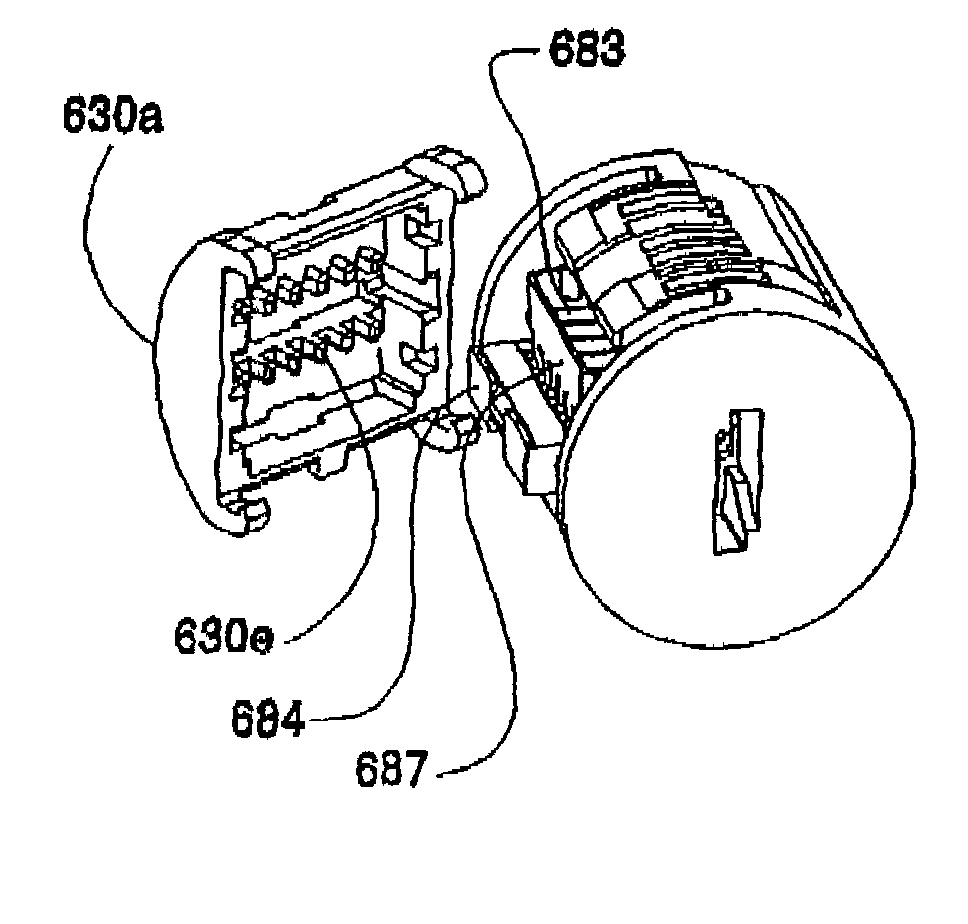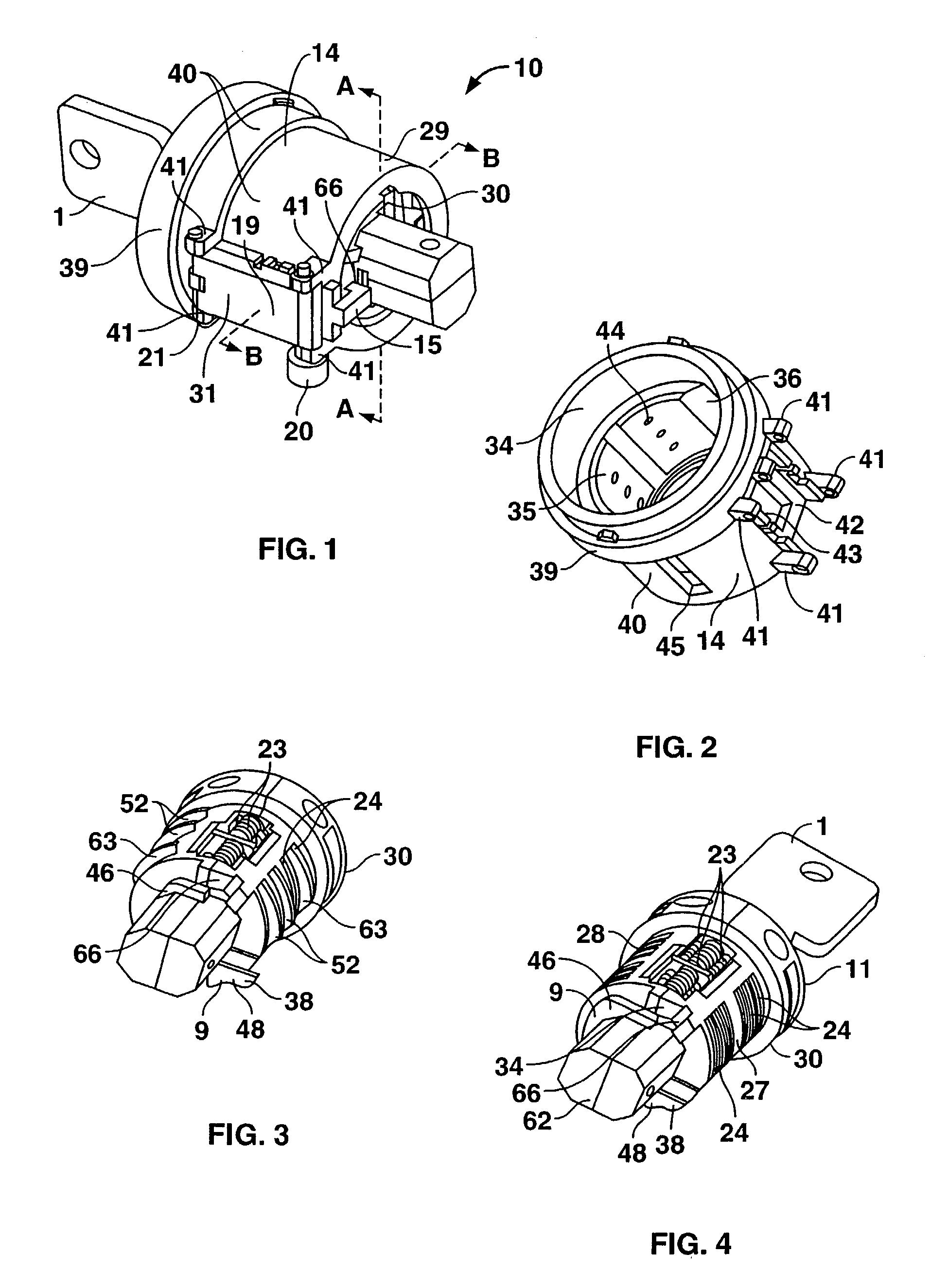Vehicular lock apparatus and method
a vehicular lock and code technology, applied in the direction of cylinder locks, building locks, construction, etc., can solve the problems of assembly line temporary stoppage, pre-coded lock sets, and many problems still exist with conventional vehicular locks, so as to reduce costly vehicle assembly mistakes, eliminate problems, and increase codings
- Summary
- Abstract
- Description
- Claims
- Application Information
AI Technical Summary
Benefits of technology
Problems solved by technology
Method used
Image
Examples
Embodiment Construction
[0081]One embodiment of a lock assembly according to the present invention is illustrated in FIGS. 1–13. With reference first to FIGS. 1–5, the illustrated lock assembly (indicated generally at 29) includes a housing 14, a barrel 30 located within and selectively rotatable with respect to the housing 14, and tumblers 23 coupled for pivotable movement within the barrel 30. By way of illustration, a lock and key set 10 of this nature operates by inserting a properly coded key 1 into a key slot 26 (see FIG. 12) at the end of the barrel 30. As the key 1 enters the barrel 30, the coded surface of the key 1 engages the pivotable tumblers 23, causing a part of each tumbler 23 to pivot. In other embodiments, entry of the key 1 into the barrel 30 causes each tumbler 23 to pivot in its entirety. As used herein, the term “pivotable tumbler” (in its various forms) refers to one-piece tumblers 23 that are pivotable within the lock assembly 29 as well as two-piece or multiple-piece tumblers 23 ha...
PUM
 Login to View More
Login to View More Abstract
Description
Claims
Application Information
 Login to View More
Login to View More - R&D
- Intellectual Property
- Life Sciences
- Materials
- Tech Scout
- Unparalleled Data Quality
- Higher Quality Content
- 60% Fewer Hallucinations
Browse by: Latest US Patents, China's latest patents, Technical Efficacy Thesaurus, Application Domain, Technology Topic, Popular Technical Reports.
© 2025 PatSnap. All rights reserved.Legal|Privacy policy|Modern Slavery Act Transparency Statement|Sitemap|About US| Contact US: help@patsnap.com



